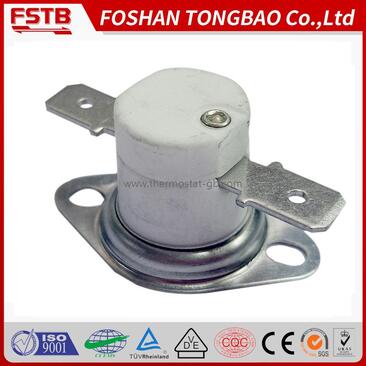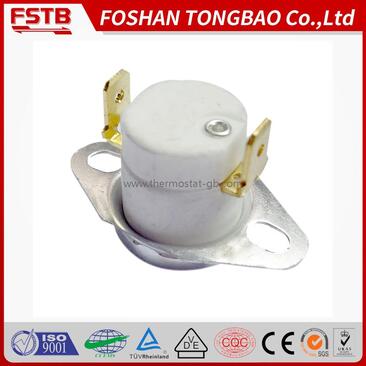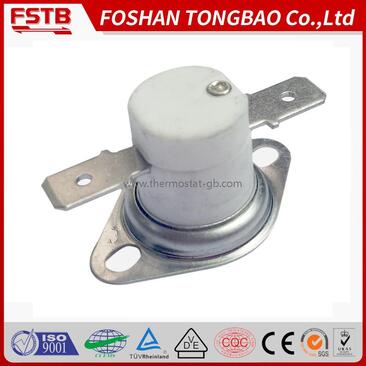Details
- 商品详情
PRODUCT DESCRIPTION
KSD307 series thermostat(1/2 " disc) is a small type of bimetal thermostat with big current and housing, SPST, and work in resistive loading. It is the important component in the heating appliances, and is widely used in different appliances such as electric heater, electric bucket, coffee makers for temperature control protection.
BASIC TECHNICAL PARAMETERS
| Housing material: | ceramic | Current: | 10A/16A/20A/25A |
| Operating temperature: | 55~170℃ | Kind of sensing element: | Bimetal and PTC |
| Switch structure: | SPST | Tmax: | Long term: 185°C / Short term(≤15 min):215°C |
| Class of Temperature Characteristics: | Normal close. After cut off, the thermostat does not close until temperature drops to 35C below and power off. |
PRODUCT ADVANTAGES
| ●Easy to install; ●High precision; ●Fast heat transfer; ●High durability; ●No breakdown, no arcing; ●Each thermostat will be tested and the temperature pass rate is high. | 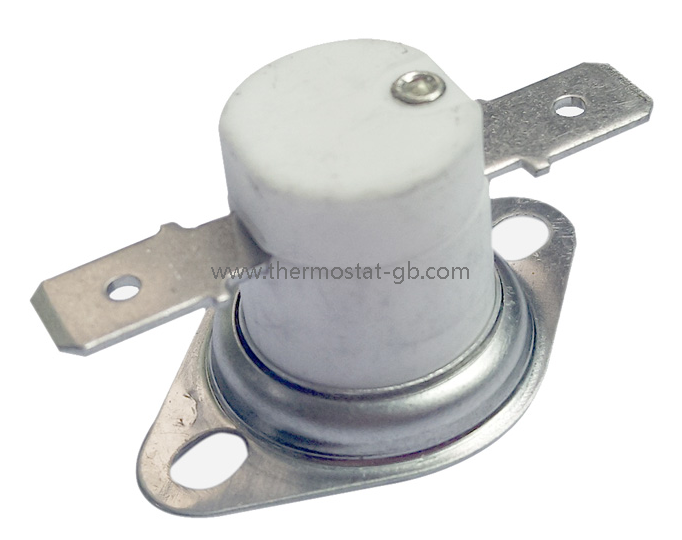 |
DIMENSION OF THE MAIN BODY
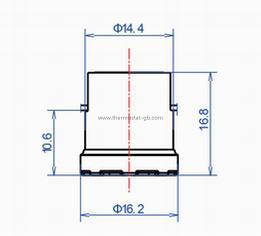
ORDER DETAILS
| package | 200/ inner box, 5 boxes/carton, box size: 480 (length) * 282 (width) * 218 (height) (mm) |
| minimal order size | 1000 |
| payment method | Wire transfer, Western Union |
| delivery time | 15 to 20 days |
INSTALLATION AND DIRECTION FOR USE
| Installation and use instructions: |
| 1. Grounding method: Connected to the grounding metal parts of the equipment through the metal casing of the thermostat. 2. The thermostat shall be operated in a general indoor environment where the relative humidity of the air is not more than 90%, no corrosive gas, no flammable gas and conductive dust. 3. When the temperature controller is in contact with the temperature, the cover should be placed close to the heat-generating part of the controlled appliance, and the thermal surface of the cover should be coated with thermal grease or other similar heat-conducting medium. 4. When the temperature controller is exposed to liquid or steam, it is recommended to use a stainless steel cover and a reliable leak-proof measure to prevent liquid from seeping into the insulation of the thermostat. 5. It is not possible to collapse or deform the top of the cover to avoid changes in operating temperature or other properties. 6. Do not allow liquid to penetrate inside the thermostat! The housing must be protected from excessive forces to prevent cracking; the housing should be kept clean to prevent contamination of conductive materials to prevent short-circuit breakdown due to reduced insulation. 7. The terminal cannot be bent during use, otherwise the reliability of the electrical connection will be affected. |


